| » BROJ 73 |
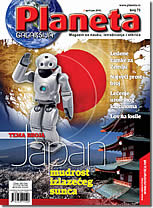 |
Godina XIII
April. 2016 - Jun. 2016.
|
|
| » Glavni naslovi |
SUMMARY
Summary
The Topic of this Issue
Japan – the intelligence of the rising Sun
|
|
 |
With a population exceeding 130 million, living scattered in over 6,000 islands, and more than a thousand years long tradition of dedication to work and contemplation, with the third largest economy in the world - Japan is a global miracle. Despite frequent and devastating natural disasters, this country has managed to maintain it positions among the best in everything that people do. The basis of the economy is made of machine industry, electronics, pharmaceuticals, robotics, automobiles manufacturing, etc. In Japan, with almost two hundred active volcanoes, the unemployment rate is below 4%, the national income per capita exceeds USD 38,000 annually, literacy is practically full, religious divide does not cause any conflicts. What is life like in the „country of the rising Sun“?
|
Internet in Serbia
The first address: MTI |
|
 |
The University of Belgrade has traditionally been a place where people tested new technologies. That was the case even at times of political problems in the Balkans.
Before other institution, the Faculty of Natural Sciences and Mathematics introduced at some time in the past the only bit-net (IBM network) to the country which, for the purposes of the academic community, was named EARN. The Serbian Statistical office was linked to Linz, Austria, where the node was located, and all terminals were located at the Faculty of Electrical Engineering in Belgrade. That was how e-mail was introduced to Serbia in 1989 and it operated for many years, until sanctions were imposed on Serbia and it became fully disconnected from the rest of the world.
Experiments with web technologies started at the University of Belgrade even before the sanctions. Prof. dr Zoran Jovanović, currently the Dean of the Faculty of Electrical Engineering, was the focus of events related to the introduction of Internet to Serbia. What was done at the time and how?
|
Astrophysics
A new epoch in space observation |
|
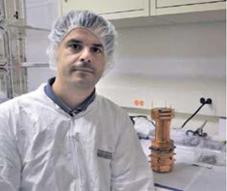 |
In early summer of 2012 the Higgs boson (the God particle) was discovered while last year there was the discovery of Neutrino oscillation . In February this year, at the press conference in Washington, David Rice, manager of the project aimed at confirming the Einstein's assumption of a century ago, stated: “We have detected gravity waves”. “The cosmic chameleons“ have in the meantime significantly fissured the Standard Model, which was missing a particle whose existence was assumed by Peter Higgs. This topic is discussed for Planeta by Vuk Mandić, Ph.D., collaboration member of LIGO, which for the first time directly recorded the “audio recording of the Universe”.
The advanced LIGO detectors, ten times more sensitive, developed in the period 2010-2015, began first observations in September last year and already on 14 September for the first time they noticed gravity waves, resulting from a collision of two black holes – says Mandić, professor of astrophysics at the Department for Mathematics and Astrophysics of the University of Minnesota in Minneapolis (USA).
|
MEDICINE
Gender medicine in urology |
|
 |
Malignant tumors of the bladder are several times more frequent in men than in women. In women they are detected at a late stage and take more lives than cervix cancers. Searching for reasons of such phenomena, prof. dr Harun Fajković, associate of the Belgrade general hospital Bel Medic and the first specialized urologist in the world for gender medicine, dedicated his work to fighting urologic cancer and enhancing treatment of affected women.
Malignant tumors of the bladder are frequent in senior age and make up about 70 percent of all urologic tumors. The most aggressive among them, the tumor of the urotelium, can occur at any place in the urological tract where there is the so-called urotelium. Since this special type of epithelium encases the whole of the urinary tract, the urothelium carcinoma can affect the inside of the kidney and urethra in the upper, as well as the bladder and urethra in the lower tract.
|
Botanical garden
Mushrooms in the capital city |
|
 |
The Belgrade botanical garden "Jevremovac" was established in 1874 by a decision of the Ministry of Education of the Kingdom of Serbia, at the proposal of the famous botanist Josif Pančić, who was its first manager. It is located in the center of the city and takes about 5 hectares of open space with more than 250 species of trees and bushes (national, European and exotic plants). It also includes 500 m2 of greenhouse established in 1892 growing numerous tropical and subtropical plant species.
All the species from the Gardens are marked with identification plates with the basic data: the scientific and Serbian name, classification and geographical origin. This educative mission also resulted in an idea to include fungi to the existing collection and to record such mushrooms which occur naturally in this terrain during the four seasons of the year.
|
Paleontology
Sand dollars in Belgrade |
|
 |
Hundreds of kilometers away from seas and oceans, buried in rocks in the vicinity of Belgrade, there are hidden fossilized remains of animals in what used to be the biggest inland sea Paratetis, known as the Pannonian Sea. Some of these animals inhabited also other warm seas in the geological past, and some are living still today. There are many different stories about them, but the most symbolical one is the story of the sand dollars. They are related to the diverse species of the sea urchin (class Echinoidea, family Clyperasteroidae).
Some members of the family Clyperasteroidae, due to their very compressed skeleton of about 1 cm, are called “sand dollars”.
Sand dollars are exclusively sea animals with five-star symmetry, specific by their shape and colors of the skeleton. Cenozoic sea sediments are abundant with their remains, especially in the middle Miocene age remains (some 14 to 15 million years old).
|
Geology
Ice on the Earth |
|
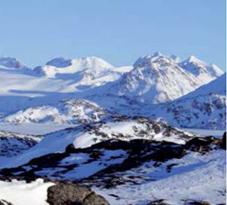 |
Ice ages are natural phenomena which have left deep traces on the surface of our planet. The most recent and best known such period in the geologic history of the Earth with such characteristics, which started some 2.6 million years ago, is well known in technical terminology as the Pleistocene. During this stage of geologic history of cruel climatic features accompanied with a significant drop in annual temperatures, thick and well spread ice covers were formed covering immense areas of the northern and southern hemisphere.
Great parts of North America and Euro-Asia used to be covered with ice whose thickness went as far as several thousand meters.
The question is: how did life survive at all through the periods of such cold and what are the consequences to the evolution of the Earth biosphere?
|
Anthropology
Searching for the origin of human life |
|
 |
The present day understanding, based on fissile remains and genetic evidence of the contemporary human and monkey populations, suggests that the breaking point between men and monkeys happened some 5 to 8 million years ago, and that hominids first appeared about 100,000 years ago. Men do not originate from monkeys, but both are linked to earlier species that they share as ancestors.
The greatest number of first discoveries was made in the densely populated Europe. In 1863 Édouard Armand Isidore Hippolyte Lartet (1801-71) discovered the first evidence that men lived in Europe during the last ice age. Soon after that, a number of skeletons were found of Cro-Magnon species were found in Europe.
|
Conquering the Space
Campaign to Europe |
|
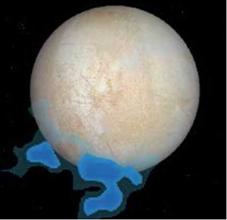 |
The next NASA mission could be aimed at having one spaceship touch the surface of Ju8piter's satellite at which there are potential traces of life. The mission of flight towards the Earth, which should happen after 2020, is to define more closely the properties of the ice satellite during a number of flights over it. Also, the space agency is considering sending a small probe to the surface of Europe. Scientists working on this project in the NASA Jet Propulsion Laboratories in Pasadena, California (JPL), have confirmed that they are considering the option of sending such a lander. NASA has contacted the ESA to be included in the mission.
The satellite „Europa“ has a diameter of 3,100 km and is covered with ice which is assumed to be 80 km thick. It is believed that inside the satellite there is a huge ocean of flowing water about 20 km deep.
|
| |
|
Kompletni tekstove sa slikama i prilozima potražite u magazinu
"PLANETA" - štampano izdanje ili u ON LINE prodaji Elektronskog izdanja
"Novinarnica"
|
|
|
| » Pratite nas |
 |
 |
|
» Prijatelji Planete |
| » ON LINE PRODAJA |
|

6 digitalnih izdanja:
4,58 EUR/540,00 RSD
Uštedite čitajući digitalna izdanja 50%
Samo ovo izdanje:
1,22 EUR/144,00 RSD
Uštedite čitajući digitalno izdanje 20%
www.novinarnica.net
Čitajte na kompjuteru, tabletu ili mobilnom telefonu

|
| » PRELISTAJTE |
NOVINARNICA predlaže
Prelistajte besplatno
primerke

Planeta Br 48
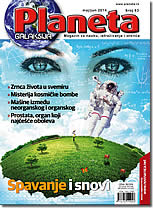
Planeta Br 63
|
| » BROJ 73 |
 |
Godina XIII
April. 2016 - Jun. 2016.
|
|
|

